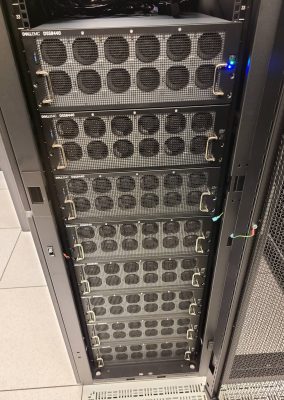6 A&S Physicists Awarded Breakthrough Prize
Our universe is dominated by matter and contains hardly any antimatter, a notion which still perplexes top scientists researching at CERN’s Large Hadron Collider. The Big Bang created equal amounts of matter and antimatter, but now nearly everything—solid, liquid, gas or plasma—is…


 The Research Computing team originally launched in 2011 to address a gap: There were no central research computing resources or capabilities to help faculty members who needed something beyond their desktop computer or what was available in their lab. ITS utilized and combined some existing resources, such as OrangeGrid, which securely scavenged compute time from idle desktops, and the Academic Virtual Hosting Environment from an existing investment in disaster recovery, to provide campus researchers something that could assist with challenging and compute-intense academic work.
The Research Computing team originally launched in 2011 to address a gap: There were no central research computing resources or capabilities to help faculty members who needed something beyond their desktop computer or what was available in their lab. ITS utilized and combined some existing resources, such as OrangeGrid, which securely scavenged compute time from idle desktops, and the Academic Virtual Hosting Environment from an existing investment in disaster recovery, to provide campus researchers something that could assist with challenging and compute-intense academic work.